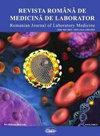Decision tree analysis as predictor tool for in-hospital mortality in critical SARS-CoV-2 infected patients
IF 0.5
4区 医学
Q4 MEDICINE, RESEARCH & EXPERIMENTAL
引用次数: 0
Abstract
Abstract Identification of predictive biomarkers for the evolution of critically ill COVID-19 patients would represent a milestone in the management of patients and in human and financial resources prioritization and allocation. This retrospective analysis performed for 396 critically ill COVID-19 patients admitted to the intensive care unit aims to find the best predictors for fatal outcomes in this category of patients. The inflammatory and metabolic parameters were analyzed and Machine Learning methods were performed with the following results: (1) decision tree with Chi-Square Automatic Interaction Detector (CHAID) algorithm, based on the cut-off values using ROC Curve analysis, indicated NLR, IL-6, comorbidities, and AST as the main in-hospital mortality predictors; (2) decision tree with Classification and Regression Tree (CRT) algorithm confirmed NLR alongside CRP, ferritin, IL-6, and SII (Systemic Inflammatory Index) as mortality predictors; (3) neural networks with Multilayer Perceptron (MLP) found NLR, age, and CRP to be the best mortality predictors. Structural Equation Modeling (SEM) analysis was complementarily applied to statistically validate the resulting predictors and to emphasize the inferred causal relationship among factors. Our findings highlight that for a deeper understanding of the results, the combination of Machine Learning and statistical methods ensures identifying the most accurate predictors of in-hospital mortality to determine classification rules for future events.决策树分析作为SARS-CoV-2危重患者住院死亡率的预测工具
鉴定COVID-19危重症患者演变的预测性生物标志物将是患者管理以及人力和财力资源优先排序和分配的里程碑。这项回顾性分析对重症监护室收治的396名COVID-19危重患者进行了分析,旨在找到这类患者致命结局的最佳预测因素。对炎症和代谢参数进行分析,并采用机器学习方法进行分析,结果如下:(1)基于ROC曲线分析的截断值,采用卡方自动交互检测器(CHAID)算法的决策树显示NLR、IL-6、合并症和AST是院内死亡率的主要预测因子;(2)使用分类回归树(CRT)算法的决策树证实NLR与CRP、铁蛋白、IL-6和SII(全身炎症指数)一起是死亡率的预测因子;(3)基于多层感知器(MLP)的神经网络发现NLR、年龄和CRP是最佳的死亡率预测因子。补充应用结构方程模型(SEM)分析对预测结果进行统计验证,并强调推断因素之间的因果关系。我们的研究结果强调,为了更深入地理解结果,机器学习和统计方法的结合确保识别出最准确的住院死亡率预测因子,以确定未来事件的分类规则。
本文章由计算机程序翻译,如有差异,请以英文原文为准。
求助全文
约1分钟内获得全文
求助全文
来源期刊

Revista Romana De Medicina De Laborator
MEDICINE, RESEARCH & EXPERIMENTAL-
CiteScore
0.31
自引率
20.00%
发文量
43
审稿时长
>12 weeks
期刊介绍:
The aim of the journal is to publish new information that would lead to a better understanding of biological mechanisms of production of human diseases, their prevention and diagnosis as early as possible and to monitor therapy and the development of the health of patients
 求助内容:
求助内容: 应助结果提醒方式:
应助结果提醒方式:


